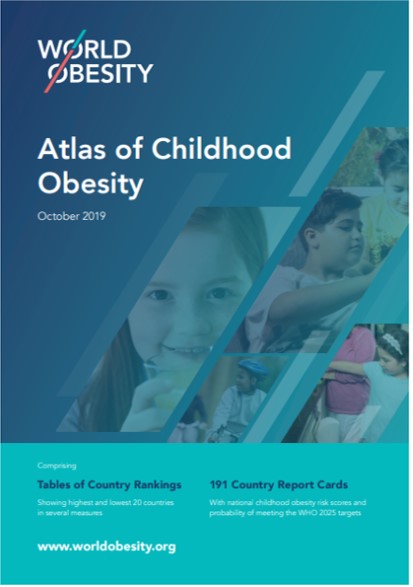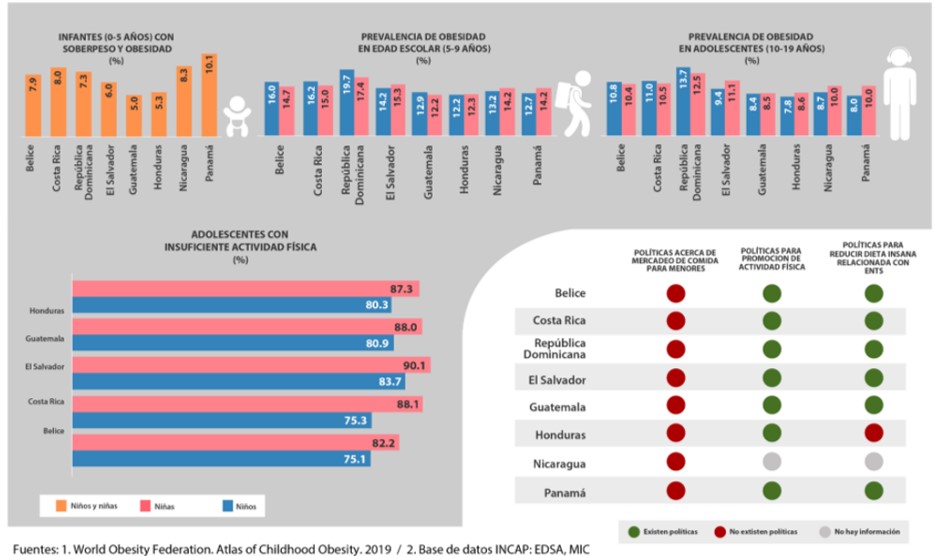Obesity in the Region
increases in child population
Guatemala City, November 6,2019

Recently, the World Obesity Federation published the Childhood Obesity Atlas, which contains classification tables of various indicators related to morbidity in 20 countries, in addition to 191 evaluation reports from countries with national scores on risk of childhood obesity and probability of meet WHO goals for 2025.
After agreeing at the World Health Assembly in 2013 that countries should ensure their levels of childhood obesity are not higher in 2025 than in 2010-2012, recent trend analyzes in 196 countries found that 8 out of 10 (156) have less than a ten percent chance of reaching their goal.
The Atlas presents data for each country, based on their current and projected levels of obesity in children, risk factors, and the presence of government policies to address obesity, such as restricting the marketing of unhealthy foods to children, promoting physical activity and national guidelines for a healthy eating environment, the Atlas gives each country a score for its risk of childhood obesity.
Governments have repeatedly pledged to address childhood obesity, most recently at the 2018 UN high-level meeting on NCDs. Despite this, overall actions to support commitments have been weak. For example, 70% of countries still do not report that they have policies in place to restrict the marketing of food to children.
This Atlas is the first of its kind and was produced with information generated by the United Nations during the compilation of a mid-term review of progress in the United Nations Decade of Action on Nutrition (2016-2025).
You can download the Atlas here.


Source:
World Childhood Obesity Federation, 2019
















